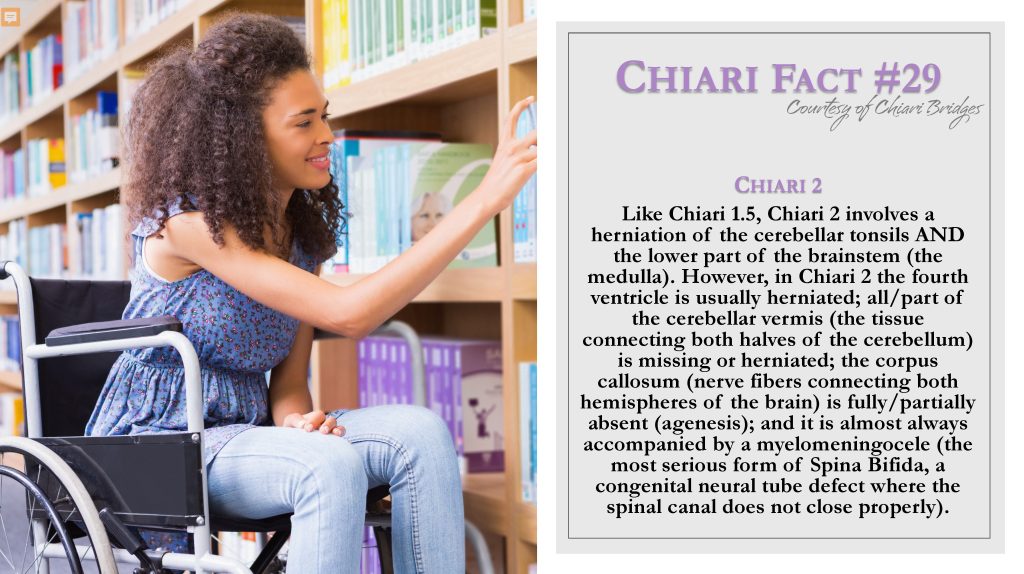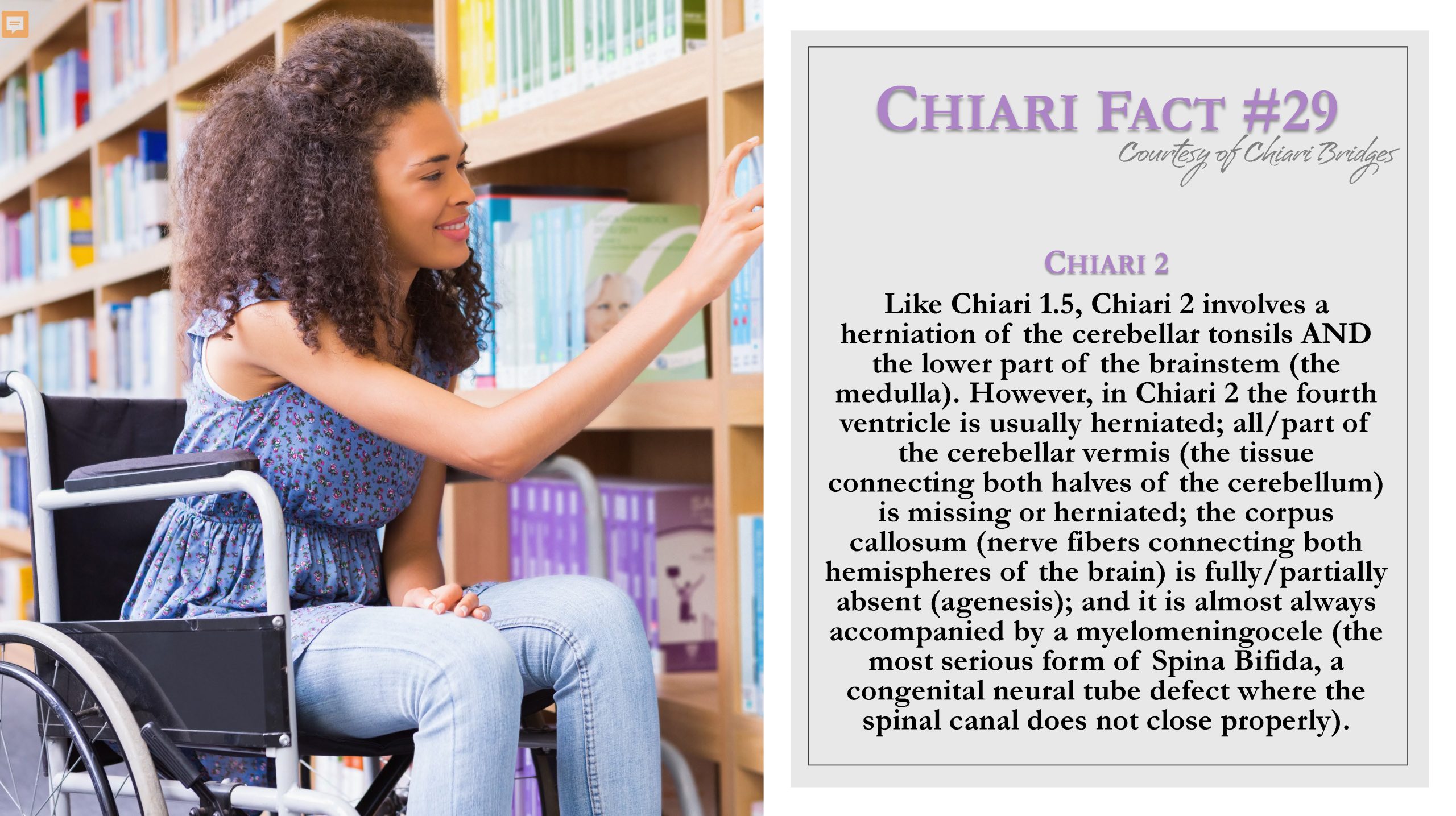Chiari Fact #29

Chiari Malformation Type 2 (also known as Arnold Chiari Malformation) involves a herniation of the cerebellar tonsils and lower part of the brainstem (the medulla oblongata) AND MORE. While many believe that a Chiari with a myelomeningocele (the most serious form of Spina Bifida; a congenital neural tube defect where the spinal canal does not close properly) automatically constitutes a Chiari 2, but as stated in this fact, there are many other elements involved in a Chiari 2 diagnosis. Unlike in Chiari 1.5, in Type 2 the fourth ventricle is usually herniated, all/part of the cerebellar vermis (the tissue connecting both halves of the cerebellum) is missing or herniated, the corpus callosum (nerve fibers connecting both hemispheres of the brain) is fully/partially absent (agenesis), and it is almost always accompanied by a myelomeningocele. Some statistics indicate that approximately 90% of those with a myelomeningocele, have a Chiari malformation.
Two of the pathological cofactors seen in those with Chiari 1.5 are ALMOST ALWAYS present with Chiari 2:
- Intracranial Hypertension – As hydrocephalus is commonly associated with Spina Bifida, causing a mass effect in the brain that raises intracranial pressure.
- Tethered Cord Syndrome – Spina Bifida causes a pulling on the spinal cord that elongates the lower part of the brainstem (the medulla oblongata), but Tethered Cord is also commonly seen with Spina Bifida.
- Myelomeningocele – Most serious form of Spina Bifida – generally treated at birth.
Chiari 2 and the presence of these known pathological cofactors, further support what studies are saying about Acquired Chiari Malformations.
While some with Chiari 2 are decompressed, anecdotal evidence reflects a general trend of an increased failure rate with decompression surgeries as compared to those with Chiari 1. Because of this, some neurosurgeons choose not to decompress those with Chiari 2.

